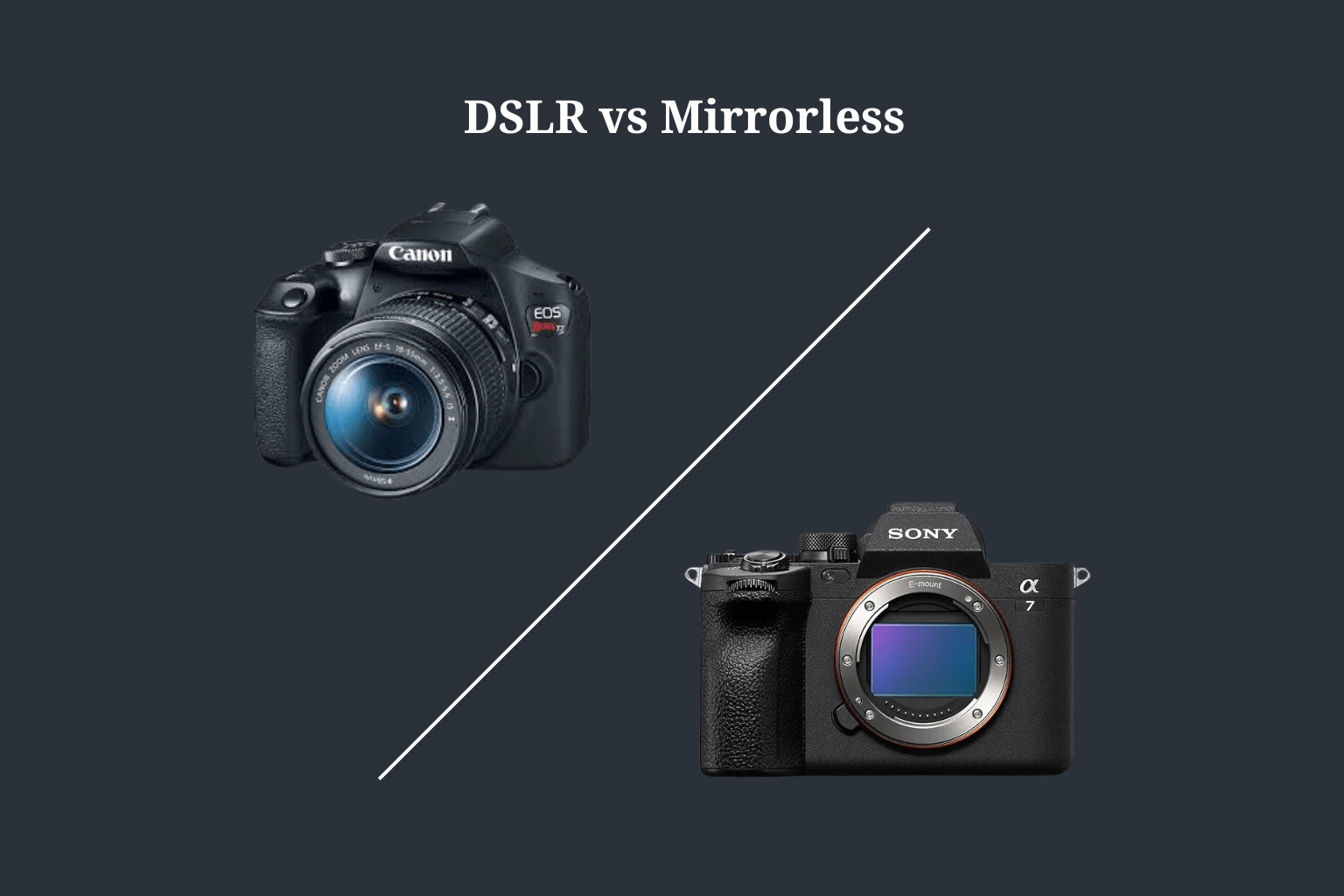
Choosing your first camera can feel like stepping into a foreign language class. Between megapixels, ISO ranges, sensor sizes, and lens mounts, even deciding between DSLR and mirrorless cameras can be overwhelming — especially when you’re just getting started.
In 2025, both systems are more accessible than ever. But which one makes the most sense for a beginner? Let’s break down the key differences, the real-world impact of those differences, and help you make a smart, confident choice.
What Are DSLRs and Mirrorless Cameras?
A DSLR (Digital Single-Lens Reflex) camera uses a mirror system to reflect light from the lens into an optical viewfinder. When you take a picture, the mirror flips up to expose the sensor to light.
A mirrorless camera, on the other hand, eliminates the mirror mechanism entirely. Instead, light goes directly onto the image sensor, and you view your composition through an electronic screen or viewfinder.
While this may sound like a small difference, it impacts everything — from size and weight to battery life, autofocus performance, and even how you interact with the camera.
Advantages of DSLRs for Beginners
Better Battery Life
DSLRs tend to offer longer battery life than mirrorless models because they don’t constantly power an electronic viewfinder or screen. For beginners, this means more shooting and less worrying about running out of juice on a day trip or vacation.
Optical Viewfinder
The optical viewfinder (OVF) in a DSLR lets you see the scene in real time without digital processing. Many beginners find this helpful in learning how light and composition interact without any digital delay or brightness compensation.
Ergonomics and Build
DSLRs typically offer larger, more comfortable grips, making them easier to hold — especially for people with bigger hands or those using heavier lenses. Their bodies often feel more rugged, which adds a sense of confidence when handling the camera.
Advantages of Mirrorless Cameras for Beginners
Smaller and Lighter
One of the most appealing aspects of mirrorless systems is how compact and lightweight they are. If portability is a priority — for example, if you’re traveling, hiking, or commuting with your gear — a mirrorless camera may fit more naturally into your lifestyle.
Live Preview and Smart Features
Mirrorless cameras show a real-time digital preview of your final image, including exposure, white balance, and depth of field. This means fewer surprises when you press the shutter — and a faster learning curve for visual learners.
Faster Autofocus and Innovation
In 2025, most of the cutting-edge tech — such as AI-powered autofocus, subject tracking, face and eye detection — is happening in mirrorless systems. They're generally more feature-rich out of the box and are improving rapidly with every release.
So… Which Should You Choose?
Ultimately, the better camera is the one that helps you grow into photography without overwhelming you. Here are some practical considerations:
| Use Case | DSLR Is Better For | Mirrorless Is Better For |
|---|---|---|
| Battery Life | Long days of shooting | Short bursts or carry-a-spare |
| Portability | Doesn’t matter as much | Travel, hiking, daily carry |
| Learning Photography | Optical viewfinder teaches light | Live preview teaches visual impact |
| Budget | Cheaper refurbished options available | Mid-range mirrorless bundles rising |
| Futureproofing | Less priority for beginners | Better investment if upgrading soon |
A Few Recommendations
Looking to test the waters with minimal investment? Consider these cameras from our current listings:
Canon EOS Rebel T7 (DSLR)
Canon EOS 4000D / Rebel T100 (DSLR)
Check out our available deals on the rebel t7
Classic DSLRs for beginners — reliable, intuitive, and bundled affordably as a renewed product.
Sony Alpha a6000 (Mirrorless)
Sony ZV-E10 (Mirrorless)
Sony Alpha 7 IV Full-frame (Mirrorless)
Excellent mirrorless cameras that combines compact size with powerful autofocus and stunning image quality.
Final Thoughts
There’s no universally “better” choice between DSLR and mirrorless — only what’s better for you. DSLRs offer durability, value, and tactile control. Mirrorless cameras offer speed, flexibility, and modern features.
If your goal is to understand photography basics, build skills, and capture great memories, both paths will get you there. What matters more is choosing a system that encourages you to practice, experiment, and grow.
And thanks to the wide range of renewed options available, there’s never been a better time to start — affordably and confidently.